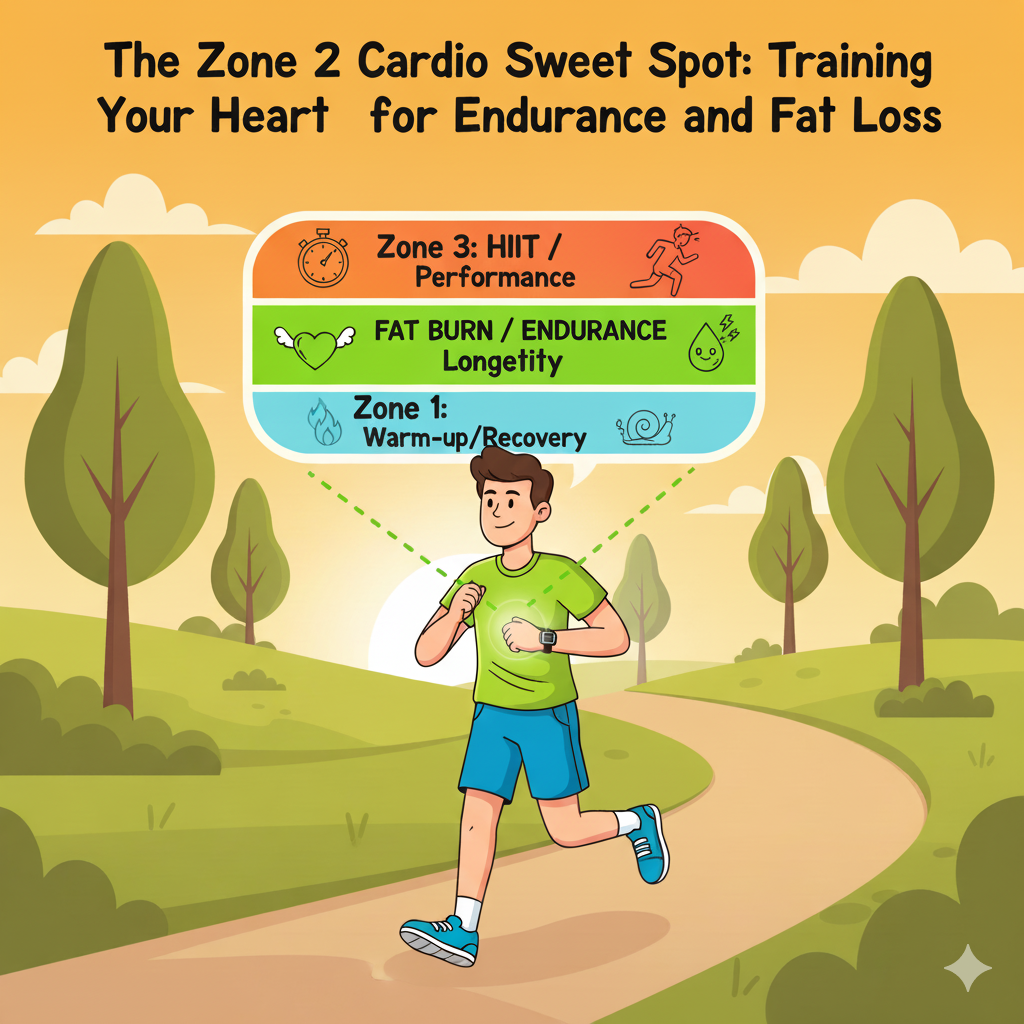The Zone 2 Cardio Sweet Spot: Training Your Heart for Endurance and Fat Loss
What is Zone 2, and Why Does it Matter? By prioritizing Zone 2, you are choosing a sustainable, smart way to train your body for health and performance
When you do cardio, your effort level matters a lot. For years, the fitness world loved High-Intensity Interval Training (HIIT), and while that's great for quick, intense work, there's another zone that's quietly becoming the biggest secret to longevity, endurance, and efficient fat loss: Zone 2 Cardio.
Zone 2 is the sweet spot, that specific level of effort that is challenging enough to train your heart and cellular health but sustainable enough to maintain for a long period. This isn't about crushing yourself; it's about training smartly.
What is Zone 2, and Why Does it Matter?
Your heart rate is split into five "zones" based on effort. Zone 2 is typically defined as 60-70% of your Maximum Heart Rate (MHR).
How it feels: This is the "conversational pace." You should be able to hold a full conversation without gasping for air, but you should be breathing heavily enough that you wouldn't want to sing. It feels challenging but comfortable.
The Science: This is where your body is most efficient at burning fat for fuel. Your body relies heavily on your aerobic system, and this zone is the best for building and training your mitochondria (the power plants inside your cells). More mitochondria mean more cellular energy and a stronger engine for both endurance and fat burning.
The Three Major Benefits of Training in Zone 2":
Supercharges Your Fat-Burning Engine: In Zone 2, your body prioritizes burning stored fat instead of immediately reaching for easily accessible sugars (carbohydrates). This teaches your body to become metabolically flexible, meaning it gets better at tapping into its fat stores for long periods. This is key for sustained energy and fat loss.
The Ultimate Heart and Longevity Workout: Training your heart at this moderate intensity improves its ability to pump blood efficiently. Over time, consistent Zone 2 training increases the size and strength of your heart, making it a powerful, efficient pump. This directly correlates to a lower resting heart rate and better cardiovascular longevity. This is the training that truly adds healthy years to your life.
Builds a Strong Base Without Burning Out: Unlike high-intensity workouts that require long recovery times and can leave you feeling drained, Zone 2 training allows you to accumulate significant workout time without overstressing your body. You build a deep foundation of fitness that supports everything else you do from strength training to managing stress. You can often do a Zone 2 session and still feel fresh enough to tackle the rest of your day.
How to Find Your Zone 2 Sweet Spot
The most accurate way to find your MHR is with a lab test, but you can estimate it and use simple rules:
Estimate Your MHR: Subtract your age from 220. (Example: If you are 45, your MHR is 175 beats per minute).
Calculate Zone 2: Multiply your MHR by 0.6 and 0.7. (Example: 45-year-old: 175 times 0.6 = 105 BPM and 175 times 0.7 = 122.5 BPM. Zone 2 is roughly 105–123 BPM).
Use the Talk Test (Easiest Method): Start walking, cycling, or jogging. Gradually increase your pace until you can still say full sentences but you have to pause briefly for a breath after every few sentences. That's your Zone 2.
How to Incorporate Zone 2 Training
Duration: Aim for 30–60 minutes per session, three or more times per week (roughly 150 minutes per week). The longer you can sustain it, the more effective it is.
Activities: Brisk walking (especially with a slight incline or light backpack), cycling, elliptical, steady-paced swimming, or light jogging.
Don't Rush: If you find yourself pushing into Zone 3 (where conversation is difficult), slow down! The magic is in the sustainability of the effort, not the speed.
By prioritizing Zone 2, you are choosing a sustainable, smart way to train your body for health and performance, a strategy that pays dividends for a lifetime.


